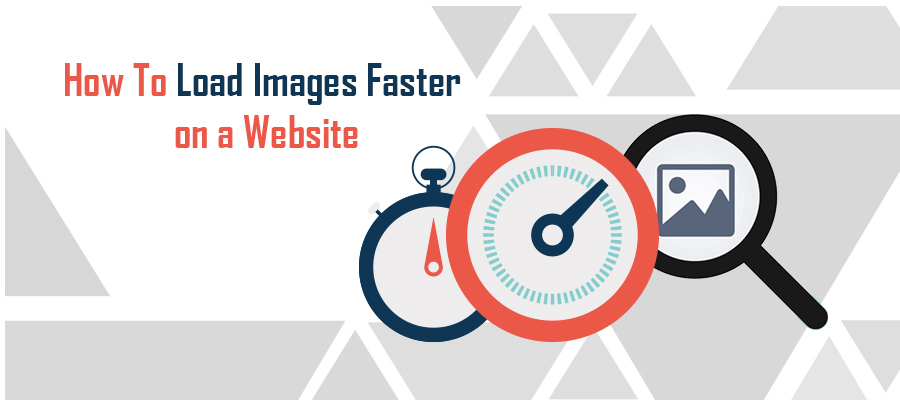 Do you remember the early days of the internet? It seems as if it was several lifetimes ago, but in reality, the era of dial-up network connections and extremely slow navigation was only a couple of decades ago.
Do you remember the early days of the internet? It seems as if it was several lifetimes ago, but in reality, the era of dial-up network connections and extremely slow navigation was only a couple of decades ago.
My, how times have changed.
As we push into the second decade of the 21st Century, our current digital landscape is a far cry from the early years of website development.
For years, images were frowned upon as they took forever to load. But, as high-speed internet connections are now commonplace, and 5G mobile infrastructure just around the corner, the visual constraints that once held us all captive are no longer a threat.
In fact, fast webpages that load images quickly are not only encouraged, but required. As Google prepared to rollout its 2018 algorithm update, industry chatter suggests the search giant will increase the influence of visual content in ranking qualifiers. While text remains invaluable, internet users are increasingly leaning toward new ways of absorbing information.
Images are no longer supportive elements. Rather, they are quickly becoming the primary elements users and search engine crawlers rely on to determine content quality, relevance and accuracy.
While on-page imagery is an essential component in SEO for 2018 and beyond, this demand is a double-edged sword.
Far too many website owners and developers are more than eager to adopt an image-heavy content strategy. However, the adoption of image optimization best practices for modern browsers is lagging behind (much like webpages across every industry).
Cultivating images that load fast and render beautifully is just as important as any other on-page technique. Actually, webpage image load times is among the most influential website components when it comes to speed.
How Images Slow Down Website Load Times
Before diving into how you can optimize webpage images for speed and performance, let’s briefly touch on why most images make your website as slow as your uncle after Thanksgiving dinner.
- Extremely large file sizes. This is extremely harmful for image-heavy sites filled with non-scaled high resolution images.
- Non-directed image rendering (i.e, unspecific dimensions).
- Not leveraging the power of image caching. This simple tactic can significantly boost webpage rendering speeds by leveraging browser-side caching.
- Improper file formats. Sure, BMP and TIFF formats can render beautiful images, but they consume a significant concentration of server resources.
How To Reduce Image Load Time | Step-by-Step Guide
While there are many methods capable of reducing image weight to increase webpage load times, the following steps are considered the most effective for an immediate page speed boost.
Step 1 – Compress Images BEFORE Uploading
Never upload non-compressed, or rescaled, images to your website. Even if the rendered image is only 100 x 100 pixels, if the uploaded file is 1000 x 1000 pixels, the server must send 10 times the amount of data than necessary.
Adjust the actual file size by lowering the image quality in your preferred image editing program. The percentage you should lower image file quality varies based on file format. However, for JPG/WebP file formats, you can set image quality anywhere from 60 to 75% without a noticeable quality downgrade.
Always preview images before finalizing to ensure they don’t appear over-compressed.
Step 2 – Select Proper Image File Format (Adjust Existing Images)
There are three widely accepted image file formats capable of maintaining quality without bogging down your website load times. These include:
- JPEG
- PNG
- WebP
Out of all these, WebP is by far the most efficient format. On average, WebP files are anywhere from 25 to 50% smaller than its counterparts. The best part? It retains the same level of quality. As an added bonus, WebP supports alpha and transparency, which makes its an excellent alternative than the sometimes-hefty PNG format.
Step 3 – Use Precise Image Dimensions
The fastest websites are those with complete instructions. Much like the human brain, browsers thrive on automation. The less open-ended commands within your code, the faster the page loads.
Even after uploading an appropriately scaled and compressed image, make sure to specify exact image dimensions in your HTML or CSS code. You’ll be surprised how this simple act can transform website speed and functionality.
This is especially important if you have a website, or specific webpage, with a decent number of images.
Step 4 – Leverage HTTPS Protocol
As a general rule, webpages typically load faster when served over HTTPS rather than the traditional HTTP protocol.
While HTTPS soaks up a couple of milliseconds immediately before webpages load images, this is an appreciated safety measure. The added time is due to the near-instant decryption by the end-user browser.
To further support the use of HTTPS, Google announced in early 2018 that its upcoming algorithm updates will show preference to encrypted websites. This includes HTTPS/SSL protocols.
This ultimately boosts your website speed and organic ranking. Talk about a win-win!
BONUS STEP – Lazy Load Images via JavaScript
While this is a somewhat complicated step, it’s definitely worth your time. Essentially, by implementing Lazy Load Images via JavaScript, which then only load images after the rest of your page. This not only provides users with much faster access to your content, but is greatly appreciated by Google crawlers.
Want to learn more about Lazy Load Images? Check out this informative guide.



1 Comment